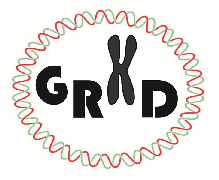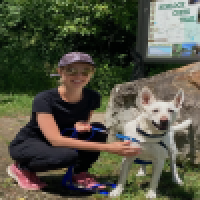Center for Gene Regulation in Health and Disease (GRHD)
Mailing Address
Center for Gene Regulation in Health and Disease (GRHD)
2121 Euclid Avenue, SR 259
Cleveland, OH 44115
Campus Location
2351 Euclid Avenue
Science and Research Building, Room 259
Phone: (216) 687-2516
Fax: (216) 687-5549

Dr. Kailash Gulshan

Assistant Professor
Location: SI 310
Phone: (216) 687-2409
Fax: (216) 687-6972
Based on the American Heart Association’s 2016 Heart Disease and Stroke Statistics update; by the year 2030, ~ 40 % of the US population is projected to have some form of cardiovascular disease (CVD). Current CVD therapies are based upon LDL lowering via up-regulation of the LDL receptor (statins, PCSK9 antibodies) and cholesterol absorption inhibition (ezetimibe). Although statins have been repeatedly shown to decrease CVD risk, there is still 50 to 70% residual risk even in high dose statin treated subjects; in addition, some patients are intolerant of statins. The long-term goal is to identify the novel pathways that can be targeted for designing therapeutics to treat and prevent CVD.
Deposition of modified low-density lipoprotein (LDL) in the arterial intima induces pro-atherogenic NLRP3 inflammasome and IL-1β release pathway. The Nlrp3 inflammasome is highly activated in advanced human atherosclerotic plaques. Inflammation due to sepsis impairs reverse cholesterol transport (RCT) in humans and the increased cardiovascular disease (CVD) incidences among sepsis survivors is a rising concern. The CANTOS trial using anti- IL-1β antibody showed a reduction in major adverse coronary events (MACE), a composite of heart attack, stroke and cardiovascular death, in patients with a previous myocardial infarction and with increased levels of C-reactive protein (CRP). These studies suggest the link between inflammation, RCT, and CVD and highlight the role of IL-1β secretion pathways in increasing atherosclerosis and CVD risk. Interestingly, a retrospective analysis of CANTOS trial showed a marked reduction in the hazard ratio (HR) of lung cancer incidence in the treatment group compared with placebo controls. In addition to CVD, the NLRP3 inflammasome and IL-1β release is also implicated in obesity-induced inflammation/insulin resistance.
My lab is focused on dissecting role of signaling lipid Phosphatidylinositol 4,5-bisphosphate (PIP2) and Gasdermin D (GsdmD) in CVD and lung cancer. The minor phospholipid “PIP2” has emerged as a major player in the NLRP3 inflammasome pathway due to its role in the release of mature IL-1β. The Nlrp3 inflammasome activation of Caspases leads to cleavage of N-terminal fragment of GsdmD, which promotes formation of membrane pores and IL-1β release from macrophages. The expression of ABCA1, a cholesterol efflux transporter, in macrophages leads to flop of PIP2 to the cell-surface. ABCA1 mediated PIP2 flop can decrease binding of GsdmD and cleaved IL-1β to membrane and dampen release of IL-1β from macrophages. We will employ cutting edge technologies such as Crispr-Cas9 mediated genome editing, Bone-marrow transplants, Anti-sense oligonucleotide (ASO) mediated generation of mouse models, Lipid-protein interactions via Mass-spec, RNA seq, and Single cell seq 10X genomics to decipher myeloid specific role of PIP2 and GsdmD in atherosclerosis, lung cancer, and diet-induced obesity.
The lab is actively looking for highly motivated Ph.D candidates, techs, and postdocs to join us in these exciting and impactful studies funded by NIH, AHA, and Case Comprehensive Cancer Center.

Postdoctoral fellow
Location: SI-310
216-687-2480
c.traughber@csuohio.edu

Postdoctoral fellow
Location: SI-310

Ph.D. candidate
Location: SI-310
216-687-2480

Ph.D. candidate
Location: SI-310

Nilam Bhandari
Ph. D. candidate
Location: SI-310

Ph.D. candidate
Location: SI-310

Lab manager
Location: SI-310
Complete List of Published Work in MyBibliography
Selected publications:
- Impavido attenuates inflammation, reduces atherosclerosis, and alters gut microbiota in hyperlipidemic mice.Traughber CA, Iacano AJ, Neupane K, Khan MR, Opoku E, Nunn T, Prince A, Sangwan N, Hazen SL, Smith JD, Gulshan K*. iScience. 2023 Mar 20;26(4) :106453. PMID: 37020959. (* Corresponding author)
- Crosstalk Between Cholesterol, ABC Transporters, and PIP2 in Inflammation and Atherosclerosis. Gulshan K*. Adv Exp Med Biol. 2023;1422:353-377. PMID: 36988888. (* Corresponding author)
- Myeloid-cell-specific role of Gasdermin D in promoting lung cancer progression in mice. Traughber CA, Deshpande GM, Neupane K, Bhandari N, Khan MR, McMullen MR, Swaidani S, Opoku E, Muppala S, Smith JD, Nagy LE, Gulshan K*. iScience. 2023 Jan 31;26(2):106076. PMID: 36844454. (* Corresponding author)
- Gasdermin D Mediates Inflammation-Induced Defects in Reverse Cholesterol Transport and Promotes Atherosclerosis. Opoku E, Traughber CA, Zhang D, Iacano AJ, Khan M, Han J, Smith JD, Gulshan K.* Front Cell Dev Biol. 2021 Jul 28;9:715211. PMID: 34395445. (* Corresponding author).
- PIP2 Is Translocated by ABCA1 to the Cell Surface Where It Mediates Apolipoprotein A1 Binding and Nascent HDL Assembly. Gulshan K*, Brubaker G, Conger H, Wang S, Zhang R, Hazen SL, Smith JD. Circulation Research. 2016 Sep 16;119(7):827-38. PMID: 27514935. (* Corresponding author)
- Free-cholesterol-mediated autophagy of ORMDL1 stimulates sphingomyelin biosynthesis. Wang S, Robinet P, Smith JD, Gulshan K*. Autophagy. 2015;11(7):1207-8. PMID: 26042659. (* Corresponding author)
- Ceramide as a mediator of non-alcoholic Fatty liver disease and associated atherosclerosis. Kasumov T, Li L, Li M, Gulshan K, Kirwan JP, Liu X, Previs S, Willard B, Smith JD, McCullough A. PLoS One. 2015 May 20;10(5):e0126910. PMID: 25993337.
- ORMDL orosomucoid-like proteins are degraded by free-cholesterol-loading-induced autophagy. Wang S, Robinet P, Smith JD, Gulshan K*. PNAS. 2015 Mar 24;112(12):3728-33. PMID: 25775599. (* Corresponding author).
- Sphingomyelin depletion impairs anionic phospholipid inward translocation and induces cholesterol efflux. Gulshan K, Brubaker G, Wang S, Hazen SL, Smith JD. J Biol Chem. 2013 Dec 27;288(52):37166-79. PMID: 24220029.
- ABCA1 mediates unfolding of apolipoprotein AI N terminus on the cell surface before lipidation and release of nascent high-density lipoprotein. Wang S*, Gulshan K*, Brubaker G, Hazen SL, Smith JD. ATVB. 2013 Jun;33(6):1197-205. PMID: 23559627. (* equal author)
- Thakur JK, Arthanari H, Yang F, Pan S, Fan X, Breger J, Frueh D, Gulshan K, Li DK, Mylonakis E, Struhl K, Moye-Rowley WS, Cormack BP, Wagner G, Näär AM. A nuclear receptor-like pathway regulating multidrug resistance in fungi. Nature. 2008 Apr 3;452(7187):604-609.
Mailing Address
Center for Gene Regulation in Health and Disease (GRHD)
2121 Euclid Avenue, SR 259
Cleveland, OH 44115
Campus Location
2351 Euclid Avenue
Science and Research Building, Room 259
Phone: (216) 687-2516
Fax: (216) 687-5549
